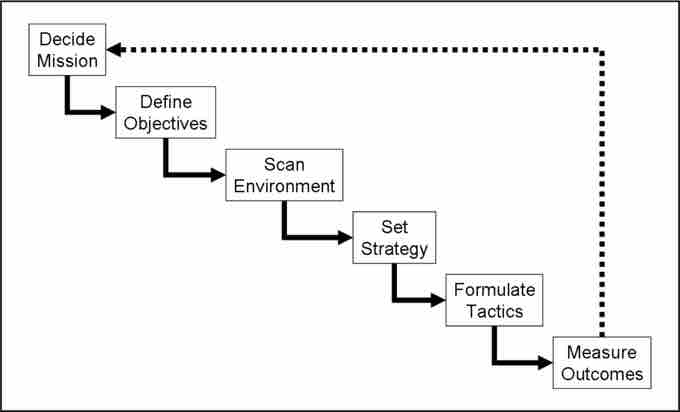The implementation process requires establishing or modifying an organizational hierarchy so the company can achieve its objectives. The following stages constitute the strategic implementation process:
- Allocating and managing sufficient resources (financial, personnel, operational support, time, technology support)
- Establishing a chain of command or some alternative structure (such as cross-functional teams)
- Assigning responsibility of specific tasks or processes to specific individuals or groups. Accountability is critical to the action plan process.
- Creating a feedback loop for control processes
Strategy implementation also involves managing the overall process. Process management comprises monitoring results, measuring benchmarks, following best practices, evaluating the efficacy and efficiency of the process, controlling for variances, and making adjustments to the process as necessary. When an organization implements specific programs, it must acquire the requisite resources, develop the process, train, and perform process testing, documentation, and integration with legacy processes.

A visual depiction of the strategic management process
The strategic management process never ends. The process restarts after a plan ends, when the company reviews the results and re-evaluates its position.
Additionally, businesses must consider the exact means of implementing a strategy, which may entail:
- Alliances with other firms to fill capability/technology/resource/legal gaps
- Investment in internal development
- Mergers/acquisitions of products or firms to reduce time to market
- Doing business with protectionist countries such as India and China, which require market entrants to operate via partnerships with local firms
Executing a Strategic Plan
One of the core goals when drafting a strategic plan is to develop it in a way that is easily translated into action plans. Most strategic plans address high-level initiatives and overarching goals but are not always translated into the day-to-day projects and tasks required to achieve the plan.
Poor terminology or word choice and the wrong level of writing are both examples of ways to fail to translate a strategic plan so that it makes sense and is executable. Often, plans are filled with conceptual terms that do not connect to day-to-day realities for the staff that is expected to carry out the plans. Strategists need to be both practical and pragmatic when devising strategy for effective implementation.
Put simply, walking the talk is easy to say and difficult to accomplish. Strategy formulation must always consider the implementation phase as the primary framework. Action plans that describe the way processes are transformed into tangible operations are a critical success factor and often a point of difficulty for conceptual strategists.